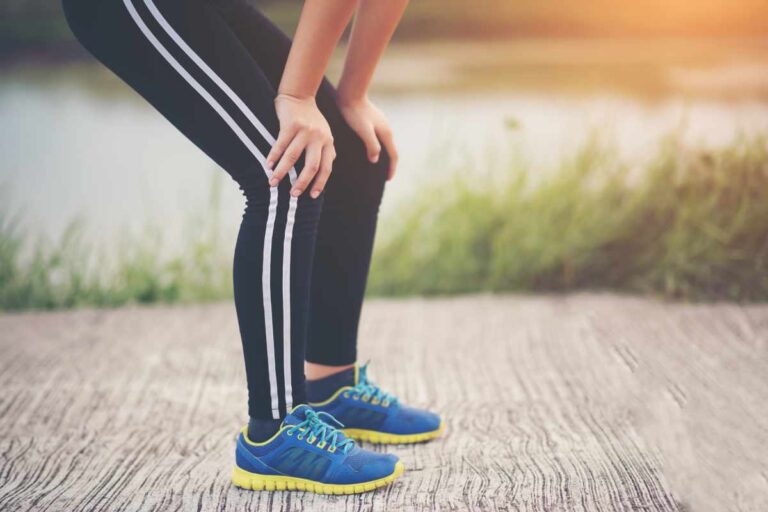
“All my muscles hurt!” How often do you hear statements like that in the gym.
“Don’t worry, it’s lactic acid. In a few days you’ll get rid of it and the pain will pass.” Often the explanation, from the instructor and also from the doctor, is exactly that. The clichés, in the field of sports training and fitness, are really hard to die.
In this short article I will try to explain how there is no correlation between muscle pain and lactic acid.
A lot of energy is produced through the metabolic pathway during intense exercise of anaerobic glycolysis. From the degradation of glucose ATP (the body’s gasoline) is synthesized and lactic acid is formed. The molecule of the latter, in an intramuscular environment, is completely dissociated in a proton (H+) and in an anion, the lactate. When it comes to muscle exercise, it is therefore more correct to speak of lactate than lactic acid. Lactate, contrary to what many insiders think, is not a “toxin” that poisons the muscle. It is simply an intermediate metabolite of the anaerobic lactacid energy production process. Lactate is disposed of in various ways.
The main one is the oxidation of lactate directly in the myocardium and in the oxidative muscle fibres with slow contraction (type I) adjacent to the glycolytic fibres that are strenuously engaged in the exercise. This process leads to an excess of VO2 (oxygen consumption), which corresponds to the payment of the O2 lactacid debt. This debt is all the greater the more intense the exercise has been and can reach 10 litres in athletes who practice short and very intense exercises. Part of the lactate is converted to glycogen in muscle and glucose in the liver (Cori cycle). Finally, to a much lesser extent, lactate is excreted by sweat and urine. It is important to stress that these processes also occur during muscle work. Lactate residue in muscle or blood at the end of the exercise follows the same metabolic pathways. The removal time respects the characteristics of an exponential function: regardless of the accumulated quantity, after 15 – 17 minutes half of it remains; after another 15 – 17 minutes there is a further halving. And so on. The return of lactate concentrations to the resting values may take between one and two hours.
During recovery, the acid-basic homeostasis (equilibrium) is also restored. In fact, the concentration of H+ ions returns to normal after 30 – 40 minutes of passive or, better, active recovery (mild aerobic activity), during which the respiratory system eliminates the excess of CO2 produced by the buffering of H+ ions by bicarbonate.
Delayed Onset Muscolar Soreness (Delayed Onset Muscolar Soreness), defined by the acronym DOMS, occurs a few hours after the end of muscular activity and reaches its maximum intensity after about 48 hours. Then, gradually, it regresses over the next few days. There is therefore no cause and effect relationship with the lactate, which has returned well before, as described, to the normal concentration of the state of rest.
At the base of the painful symptoms there are real microscopic lesions of the muscle fibrocells (especially of the cell membrane) and the connective tissue of the tendons. The muscle damage can be quantified by the dosage of certain enzymes, such as lactatodehydrogenase (LDH) and especially creatine-phosphokinase (CPK), as well as a metalloprotein (contains iron), myoglobin (MG), which testify to the existence of these lesions. In general, late muscle pain inevitably presents itself, even in the highly trained athlete, when he or she performs an unusual exercise that intensely stresses a muscle group not trained for that particular type of exercise.
It should also be noted that, even more than the amount of workloads, it is the type of exercise that causes the DOMS. La tesi attualmente più accettata è che sia il lavoro eccentrico, che attiva soprattutto le fibre rapide del tipo II B e caratterizzato da un’ elevata tensione con allungamento del muscolo, il principale responsabile dei marcati fenomeni di lesione delle miofibre.
For example, a downhill run, much less tiring than an uphill one, causes, unlike the latter, much more intense late pains.
The following are useful tips to suggest to the less experienced to reduce, in part, the DOMS, and to optimize the effects of working in the gym:
train continuously. Sporadic training is not necessary. Conversely, it can also cause major injuries to muscles and joint structures.
Train progressively, avoiding the risk of overloading, in order to encourage the development of muscle and cardiorespiratory changes known as “adaptations”, which characterize the trained athlete.
Recover properly between workouts. It should be remembered that “adaptations” do not develop during training which, in itself, is a stressful event that alters the homeostasis of the body, but during the following rest. The advice is not to re-train a muscular district before the DOMS has completely passed: for strenuous training, six or seven days must be spent, during which other muscle groups can be trained.
Eating properly, with a balanced diet that includes adequate amounts of fruit and vegetables, and therefore antioxidant vitamins (A; E; C).
Perform, before and after each training session, stetching with the correct technique. Especially global postural stretching, avoiding “compensation” of the muscles adjacent to the stretched muscles, helps to prevent contractures and relieve pain.
Chinesiologo
Damiano Francesconi
Tel: +39 329 927 4316
Email: info@damianofrancesconi.com
Damiano Francesconi – Chinesiologo – Pt.iva: 03546850177 – CF:FRNDMN65P28B157V –Via canneto 22, 25089 Villanuova sul Clisi (BS)–info@damianofrancesconi.com – Tel: +39 329 9274316
